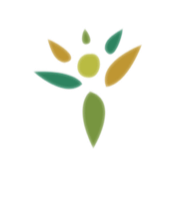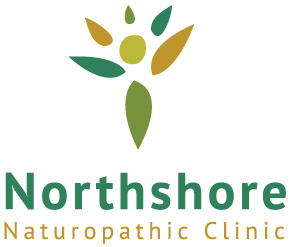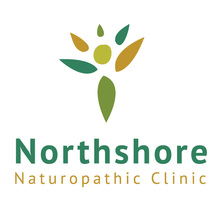By Dr. Matsen
In the U.S., over 160 men and women have heart attacks from coronary artery disease per hour, for a total of 1,500,000 per year. While half survive their first attack, 750,000 die without even knowing they had coronary heart disease.
Coronary artery disease is not a new disease, but only within the last century it has become a killer of gargantuan proportions throughout civilized society. The great writer of medical texts, Sir William Osler, wrote in 1892 that coronary artery disease was so rare that in his long career he had only seen a few dozen cases.
Yet by the end of World War I, 12% of “advanced” countries were dying from coronary artery disease. After World War II, that number shot up to 30%, and now it is 50% that die from artery disease if you include strokes.
The plaques that block the arteries consist largely of soft cholesterol and hard cholesterol, often overlain with a fibrous cap and, in the later stages, a layer of calcium. These plaques develop over time, quietly, as there are no symptoms until the plaque grows large enough to impede blood flow; or a chunk or clot breaks off and blocks a smaller artery downstream, creating a heart attack or stroke. The damage, whether it is in the heart or the brain, is called an infarct.
The cholesterol observed in the artery plaque led to the presumption that cholesterol in the diet was the cause of coronary artery disease and thus began an era of low-cholesterol, high-polyunsaturated fat diets that, if anything, increased the incidence of heart disease.
Later came the insight that only a small amount of blood cholesterol actually came from the diet; the majority was made by the liver. Thus began a trend of forcing the liver to stop making cholesterol with medications such as the statin drugs which block a liver enzyme that produces cholesterol.
However, the improvement rate over five years in patients with major heart disease taking statin drugs was marginal, as the rate only increased from 94.3% to 95.4%. This is a very small improvement considering that statin drugs also block the formation of other important liver pathways such as the production of Coenzyme Q10. Several of the statin drugs have already been pulled off the market due to deaths, indicating that the premise behind their use is suspect. This is backed up by recent research that shows 40% of people who have heart attacks or strokes actually had low blood cholesterol levels anyway.
A study in 1997 showed that high blood triglyceride levels were a better indicator of heart disease than cholesterol levels. Since triglycerides are generally produced by a diet that is high in sugar, this supports the 1993 Harvard study of nurses which showed that consumers of cookies, biscuits, cake and white bread were the most likely to develop coronary heart disease.
A recent study done at the University of Alberta identified another overlooked fat that is also a likely culprit in artery disease—chylomicrons. These fats are the ones that are quickly absorbed from your meal shortly after eating. Since testing for cholesterol levels requires fasting, chylomicron levels have been overlooked in previous cholesterol studies. This study tagged the chylomicrons with fluorescent markers and found they could stick to arteries much faster than cholesterol could.
The good news about these two studies that implicate triglycerides and chylomicrons with coronary artery disease is that both these conditions—high triglycerides levels and high chylomicron levels—are readily corrected without the use of expensive and dangerous drugs.
To reduce dangerous triglycerides, cut out refined carbohydrates. Follow the Eating Alive Program which emphasizes healthy eating that includes whole grains and more natural sweeteners. Slashing refined carbohydrates can dramatically drop triglyceride levels within days to weeks.
To reduce dangerous chylomicrons, reduce heavy fats (such as those found in red meats and full-fat dairy) and trans fats—replace them with healthy fats found in fish, nuts, seeds, etc. To improve the digestion and absorption of the fats that you do eat, add in the illustrious artichoke, the most underrated of all foods.
Artichoke (Cynara scolymus) is a member of the aster family which includes chamomile, dandelion, echinacea, marigold (calendula) and milk thistle. Like milk thistle, artichoke has been well-proven as a strengthener and healer of the liver. Unlike milk thistle, artichoke has been a regular part of the human diet for thousands of years, at least in the Mediterranean area where it originated. Egyptians, Greeks and Romans have all recorded its use as food and medicine.
Artichokes are used to improve both the quantity and quality of bile which in turn improves your digestion and absorption of fats, including chylomicrons. Research in the 1970s found the active ingredient, cynarin, to be highest in the leaves, but subsequent studies have found so many other active compounds that it would be premature to try to extract one or two at the expense of the others.
Numerous studies have shown artichokes to help in the digestion of fats, to lower high cholesterol and high triglycerides, and to ease dyspepsia, hypoglycemia, irritable bowel syndrome and gall bladder symptoms.
Artichokes can be purchased fresh, or in cans or jars as artichoke hearts, packed in olive oil or water (often with salt and citric acid added). They can be used on their own or chopped into smaller pieces and mixed in with other ingredients. Garlic has been shown to be synergistic at improving blood fat levels. Artichoke can also be purchased in capsules and extracts.
To give your body the best chance for dietary success, don’t overlook the medicinal benefits of the artichoke.


